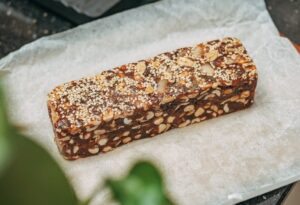Before we start, let us pause things for a minute to understand how recent advancements in smartphone photography has led to a situation where your smartphone camera is capable of capturing photos that rival dedicated point and shoot cameras.
What is also clear is the fact that the era of noisy, pixelated night shots from smartphones is over. With the legendary “Night Sight” mode in its third generation Pixel smartphone, Google has opened the door to computational photography. This, in turn, has led to other manufacturers also investing heavily in developing smartphones that can now capture beautiful, professional-looking low light shots.
Anyway, with the introduction out of the way, let’s dive right in and learn how to shoot excellent low light photos on your smartphone.
The theory behind good night images: sensor size meets a little light
Good pictures in the dark with the dedicated night mode
Light painting, stars & co.: Special modes for photos in the dark
Manual mode at night: long exposure just like a pro
Bonus tips and further articles on smartphone photography
NextPit Vivo X51 camera
Many cameras, big differences: Not every sensor shoots equally well / © NextPit
1. The theory behind good low light images: Sensor size
First, the good news: Not only has image processing algorithms used by smartphone cameras developed rapidly in recent years, it is undeniable that the software used in these cameras has also seen an improvement. Smartphones of today also feature much larger sensors compared to their predecessors from a few years ago. Whereas just two years ago, 1/2.3-inch sensors were among the “giants”, it is not uncommon today for smartphones to feature a much larger 1/1.33-inch sensor. Take a look at the image below to understand how significant of a size difference this really is.
image sensor sizes
Here are a few typical sensor sizes when compared according to scale / © NextPit
As you can infer from the infographic above, a sensor in the 1/1.33-inch format offers more than twice the surface area of a 1/2.3-inch sensor. Doubling of the area means double the amount of light output, translating to twice the quality (in theory). Apart from the shift towards larger sensors, there was another important development.
Exmor, Isocell & Co.: Why smartphone image sensors are so important!
Night shots and the zoom trap
Unlike three years ago, smartphones today are not content with just one or two lenses. In fact, it is not uncommon to spot smartphones with four or even five rear-facing cameras. The use of multiple lenses lets the manufacture make tall claims about the capability of their smartphones. This is essentially because these manufacturers can now claim to offer features like 100x zoom, ultra-wide-angle photos, and amazing macro shots on a single device. The problem is this: While the main sensors have indeed advanced rapidly in terms of quality and technology, the sensors used on the secondary and tertiary cameras are usually very tiny and of much lower quality.
The result? Anyone who uses the hyped-up night mode during twilight to photograph their fellow men at least 1.5 metres away using a triple zoom lens will be in for a nasty surprise later. Unfortunately, even the great computational photography algorithm was unable to save the Pixel from its own sensor, which is possibly only 1/3.2-inches in size with a tiny bit of glass in front of it. Some manufacturers, therefore, took the step to partially deactivate the night mode on their ‘weaker’ camera modules.
night photos crops
Two pictures from the Xiaomi Mi Note 10 with identical magnification: the zoom lens (right) almost always offers worse image quality than the main camera. It is worthwhile to go closer to the subject as far as it is possible / © NextPit
Tl;dr: The best photos by far are always taken with the large main sensor in low light conditions. The other camera sensors always offer significantly worse results in terms of sensor area and aperture size.
Smartphone camera aperture guide: What does f1.7 actually do?
The 100x zoom fairy tale: Smartphone focal lengths and optical zoom explained
2. Good pictures in the dark with the dedicated night mode
As mentioned at the beginning, almost every smartphone now has a night mode, but these work a little differently on individual smartphones and sometimes, they come with additional settings. In order to take good night pictures, you should definitely take a look at how your night mode works. Here we want to describe the typical differences between night modes and what you have to take into consideration before capturing your shot
Multi-shot night mode (available on most current smartphones)
Actually, multi-shot night modes are not new. As far as ten years back, Sony DSLRs combined several shots together in order to reduce image noise. This was still considered to be a niche feature back then, but today, you’ll find such a night mode on virtually every smartphone – and you should use it in difficult lighting conditions in almost any case, especially if you don’t want to tinker around with the settings in Pro or Manual mode for long.
The capturing process typically takes anywhere from one to three seconds in addition to a similar amount of processing time – before the image is finally available for your perusal. You will need to keep the phone as still as possible while shooting, and hold it steadily until the end of the exposure, because you’ll normally be rewarded with less noise, a better amount of detail, and brighter exposure than in standard mode.
light sources
The various night modes tend to overdo the exposure. Candles get overexposed like what you see on the right side of the picture. Use the exposure compensation or tap the candle before taking the picture to prevent such overexposure from happening / © NextPit
This is especially true when it comes to exposure as the manufacturers like to overdo it and try to make your night shot appear as bright as day. Tone the exposure compensation down a notch in order to keep the mood. Your smartphone doesn’t have this in night mode? Then tap the AE/AF point on a bright area of the image, such as the candle that lights up your Christmas dinner, and the camera will do the rest.
Last but not the least, you should also try out whether the night mode in your smartphone is susceptible to motion artefacts, i.e.: Are there ghost images when the subject moves in front of the camera? If so, you should use the standard photo mode for moving subjects, which usually only takes a single photo. There is an exception to this recommendation which you can check out in the next paragraph.
blurry night
Moving in the direction of travel in night mode: Due to the slower shutter speed, the subject is in focus and the background is blurred. That looks nice, but it also results in motion artifacts in the picture. For example, the streetlight is affected slightly here / © NextPit
Hands-free night mode (including Huawei, Honor and Apple)
On some smartphones, especially Huawei’s, the night mode activates extremely long time exposures of up to 32 seconds when holding it in your hands. Again, the first rule of thumb is this: the more still you hold the smartphone during the entire exposure time, the better the result. With moving subjects, however, it’s a matter of luck whether the algorithm will include the desired subject in the final picture or not.
So if your subject is even a little more dynamic than the Eiffel Tower, Huawei and Honor smartphones prefer to shoot such scenes using the standard camera mode. Smartphones also recognise a night mode when “AI” is activated and behave accordingly. On iPhones, you should also turn the night mode shutter speed down for moving subjects.
huawei mate 40 pro review photo night
The Huawei Mate 40 Pro detects dark subjects even in the normal automatic mode and adjusts the shooting parameters accordingly. The dedicated night mode is often not necessary if it is not really pitch-black / © NextPit
Antoine, for example, found it difficult during his review of the Huawei Mate 40 Pro to differentiate between the image quality in the standard automatic mode and in the special night mode; at least this is true for “normal” dark night scenes with street lighting.
Night mode with tripod (Realme, Oppo, and OnePlus, others)
Many manufacturers, including Apple or those from the BBK group, offer the option of activating a tripod mode in night mode. This mode will only provide useful results if you actually place your smartphone on a tripod – or at least lean it against somewhere, clamping it, laying it down, or holding it against a windowpane or wall.
One more tip: If you use a tripod, activate the two-second self-timer. This prevents the photo from being blurred by pressing the shutter release on the display or by pressing the volume button.
Your smartphone does not have a tripod mode? No problem! In the next section on manual mode, we’ll show you how to take control of ISO sensitivity and shutter speed – and make your photos look exactly the way you want them to.
MG 7214
If you want to shoot in tripod mode, you should have a tripod. The rewards are noise-free and sharp photos in the dark / © NextPit
Tl;dr: Modern night modes are really helpful, but they have their pitfalls. However, if you understand how night mode works on your smartphone, you’ll be able to avoid ruining your photos with motion artifacts.
3. Light painting, stars & special night modes
The “More” tab, if present, should be just as useful in many camera apps as the pre-installed Microsoft browser: If someone ends up here, it is most probably unintentional. A deeper peek into the remote corners of the camera app can really be worth it though – especially where Huawei and Honor smartphones are concerned, there are many treasures buried here.
Light painting, fireworks, thunderstorms.
Under the inconspicuous option “Light painting” on Huawei smartphones there are four more options known as “Light traces”, “Light graffiti”, “Silky water” and “Star trails”. All of these modes work in a similar manner: Using long time exposure, moving points of light are represented as long traces. With a flashlight or a sparkler, you can draw light tracks into the picture – or leave the work to passing trains or cars. At the same time, the camera app takes care of proper illumination of the surroundings. You only have to press the shutter button twice – for “start” and “stop”.
night photography exposure
With the light painting mode in Huawei and Honor smartphones, you can expose as long as you want. Meanwhile, passing cars are transformed into light tracks. / © NextPit
The water option is suitable for daylight use and should be swept under the carpet at this point, while the “Star trails” mode falls into the next category, namely…
Astrophotography
… Star photography or astrophotography. The trick with Huawei or Honor is that through extremely long exposure times, the stars in the sky are not only shown as bright points but also as circularly distorted traces of light. In order to achieve this, the shutter speed must, of course, be far faster compared to typical night photos, and you would have to leave it exposed for at least a two-digit minute or even hour range.
AndroidPIT realme x3 superzoom image quality starry night vs tripod
Tripod mode vs. star mode in Realme X3 Superzoom. Nights without moonlight are better suited for astrophotography. The bluish lens flare in Starry Night photography mode shows that the algorithm did not take into account the rotation of the earth – here the exposure time of several minutes is shown / © NextPit
The astrophotography mode works somewhat differently from one competition to another, such as Google, Realme or OnePlus. Here, the smartphones compensate for the rotation of the earth during a several-minute shot via the software, so that the stars are displayed in a dot-like, but bright and noise-free manner.
How to take photos of fireworks with your smartphone
Tl;dr: In addition to the astrophotography mode that is making its way into more and more smartphones, light painting options found in Huawei and Honor smartphones deliver cool night time shots. It’s worth taking a deeper look into the various options of the camera app.
4. Manual mode at night: long exposure just like a pro
If your smartphone doesn’t have the corresponding mode for the desired effect on board, there’s only one thing that helps: take control of it yourself. In manual mode or pro mode, you can adjust most of the photo-taking parameters yourself. Most importantly for night shots would be the ISO sensitivity and shutter speed. By default, both parameters are set to “Automatic” in Pro mode – so your smartphone usually configures them in such a way that the shutter speed is still sufficient for freehand shots and at the same time ensuring that a sufficient amount of light reaches the sensor.
Shutter speed
The most important parameter for creative night time shooting is the shutter speed. It determines how long the camera “collects light”. The longer the shutter speed, the brighter the image. However, as soon as the shutter speeds become slower than 1/10 to 1/20 of a second, depending on the performance of the image stabiliser, it is no longer possible to take sharp pictures by holding it in your hands. In this case, you will need a tripod or you have to lean the smartphone against somewhere or press it against a wall to keep it very still.
MG 7131
Longer shutter speeds than 1/10 to 1/20 of a second require a tripod. At 1/5 of a second, it is already difficult to take sharp pictures with your hands / © NextPit
But why longer shutter speeds now?
With slow shutter speeds, all moving objects become blurred. Passing cars, sparklers or the flashlight of another smartphone leave light traces in the picture. Dark objects disappear. The creative possibilities are endless. I recommend a Google image search for “light painting”.
The slower the shutter speed, the longer the time the smartphone can collect light. More light means less sensitivity means less noise – and that brings us to ISO sensitivity.
ISO Sensitivity
The ISO value determines how much your smartphone amplifies the captured photo. The higher the ISO value, the brighter the image. At the same time, however, a stronger degree of brightness also means more image noise. When it comes to the ideal image quality, ISO values should be set as low as possible.
Since the aperture is fixed on most smartphones, the ISO sensitivity together with the shutter speed controls the brightness of the image. Is your smartphone overexposing the photo at your desired shutter speed with the ISO value set to “Auto”? Then select a lower value manually.If your smartphone doesn’t allow manual adjustment of ISO sensitivity, there are several apps available, such as Camera FV-5 Lite (Android) or Pro Camera (Apple).
MG 7065
With exposure times of several seconds, ISO values in the range of 50 to 200 are usually sufficient. Here the photos will be nice and noise-free / © NextPit
ISO sensitivity and dual ISO in smartphones: Are they important?
Tl;dr: In manual mode, you take control of the resulting image. This is especially true when it comes to complex motifs or very precise ideas that you have about the resulting photos, where no automatic system can keep up.
5. Bonus tips and further reading about smartphone photography
Last but not least, I would like to give you four general tips for better night shots.
More light for better photos
As you read above, you can improve image quality by using low ISO sensitivities. Logically, this works not only with longer shutter speeds, but also with more light, which can be added to the subject by using additional light sources.
Always available here is the integrated LED flash of the smartphone. Most smartphones now come with several LEDs to match the colour of the flash to the ambient light. This is usually quite effective in preventing colour casts, and the pictures look harmonious, but when the flash is fired from the camera’s line of sight, all shadows are lost – and thus the subject often appears very two-dimensional and literally “flattened”. Therefore the built-in flash should only be used in an emergency.
portrait
Dark? Find a place with more light for the photo / © NextPit
In most cases, however, there are also other ways of providing more light. If you photograph something moving, change the location. For a portrait, take a few steps with your model. Illuminated shop windows, advertising signs, or neon lettering provide great light for night shots. Also, learn to play with the direction from where the light comes from.
Enable RAW recording
Most smartphones also enable the RAW function to be activated in Pro mode. This is definitely worthwhile, as the photographs saved in the RAW format offer more freedom in image processing later on. Fre not – the processing of RAW photos also work on the smartphone without any problems, for example, using apps like Snapseed. There are other alternatives you can check out here:
Picture perfect: The best image editing apps for Android
raw jpeg banding
An advantage of RAW images is the greater depth of colour. The JPEG image (left) has banding effects, while the RAW equivalent (right) still allows a smooth colour gradient / © NextPit
Clean the lenses
As trivial as it may sound: really give the lenses of your smartphone camera a nice wipedown before every photo opportunity. This is especially important at night, as dirty lens results in heavy streaks around light spots and ruins your pictures. You don’t even need a fancy microfiber cloth – it’s enough to wipe the camera lens with a t-shirt, blouse, or sweater.
dirty lens
A smeared lens creates unwanted light effects around light sources in the image. This is especially noticeable in night shots / © NextPit
Better too many than too few photos
The risk of camera shake is always high, especially when taking night photos. Therefore it is better to take too many photos of each subject than too few. You can always delete spoiled photos later. But if you have taken only a single blurred picture and notice it afterwards, there is no chance of having it corrected.
Understand the possibilities and limitations
We will always try to keep you up to date when it comes to state-of-the-art smartphone cameras. It is a great help in mobile photography if you know the limitations and possibilities when taking better pictures is concerned- not only at night, but just about everywhere. Here you can find our overview article about this:
The ultimate smartphone camera guide in 2020
Conclusion
There are numerous ways to take great photos with your smartphone, even in low light conditions. As with photography in general, I can only advise you one thing here: Take your time to try different things out. Get to know the settings of your camera app in detail. And above all, take lots of pictures. It’s not the reading of such articles that will make you a better photographer, but the taking of photos itself.
Source: https://www.nextpit.com/how-to-take-photos-at-night-with-your-smartphone
- https://www.nextpit.com/
- Smartphone
- United States









